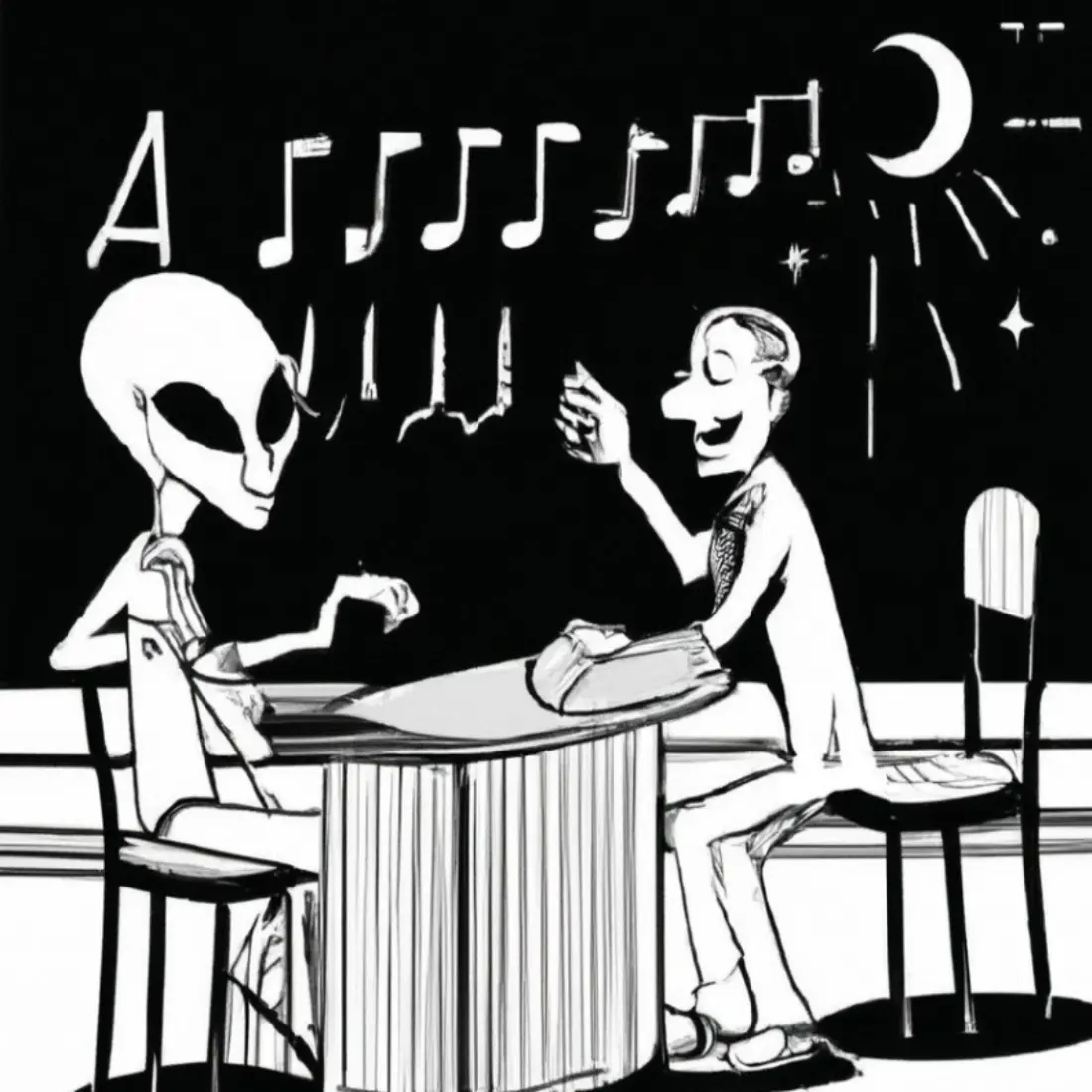Ab Initio Approach to Music Generation
Our methodology in defining the tonal properties of music is grounded in an ab initio approach, meaning it operates independently of any pre-existing musical data or assumptions. This method embodies a unique form of artificial intelligence, as it simulates the human capacity to transform emotions into musical tones without relying on traditional learning methods or musical rules. The uniquely developed algorithm at the heart of our project is designed to convert prescribed tonalities into complex multi-track musical scores through a process that:
- Avoids conventional machine learning techniques and training on existing musical genres, styles, or patterns.
- Operates without adherence to established musical rules, grammar, scales, or chord definitions.
- Foregoes randomness in tone generation, ensuring consistent outputs for identical inputs.
- Relies on a foundational concept linking emotional affect to variations in consonance and predictability.
- Rapidly produces polyphonic compositions based on input variables affecting consonance and predictability, serving as a creative tool rather than a composer's replacement.
Innovative Conceptual Framework: Music for an Alien Mind
Imagine attempting to elucidate the concept of music to an extraterrestrial being devoid of any prior exposure to music. This intriguing challenge underpins our project and significantly influences our algorithm's design. To achieve a universally applicable result, our algorithm is crafted from the ground up, employing purely algebraic operations within the time-frequency domain without defaulting to structural conventions or trainable parameters. The pivotal insight emerged when we discovered that reversing the algorithm's direction, guided by specific temporal variations in our hypothesised tonal properties, could evoke music with distinct tonal characteristics and emotional content. Since our algorithm isn't predicated on any existing musical examples, it has the liberating potential to go beyond conventional music composition rules, venturing into uncharted auditory experiences. In this way, Tonamic can be viewed as a universal music generation system designed by an 'alien' who understands frequency, time and mathematics, but has never heard a single piece of music!

Alien: Can you do this through your visual sensors?!
(Images created by DALL E 2)
Inspirational Backdrop
Inspired by the profound words of Nikola Tesla, "If you want to find the secrets of the universe, think in terms of energy, frequency, and vibration," our model draws upon the principles of statistical mechanics (SM). This branch of physics, which employs statistical methods to explain the macroscopic phenomena of material assemblies through their microscopic interactions, serves as the bedrock for our exploration of music theory. By analogously considering tonal intervals as atomic entities with inherent energy, our approach mirrors the innovative use of SM in music as an information system.
Analytical Framework
In this model, we perceive tones—defined by their frequency, duration, and timing—as the fundamental particles of our musical universe. We then apply a novel methodology to calculate:
- Entropy, which relates to the predictability of the next note in a sequence and gauges the level of Surprise.
- Energy, derived from the dissonance of tones within a sequence, utilising a unique, parameter-free model, to gauge Tension.
Our model abstains from traditional assumptions about musical data, focusing instead on the temporal evolution of these properties to characterise melodies.
Generative Algorithm
The heart of our music generation lies in an algorithm that begins with a simplistic, uniform note sequence. It iteratively adjusts note frequencies, recalibrating the aforementioned properties until achieving minimal deviation from a set of pre-defined levels of tension and surprise. This process intentionally disregards musical grammar, scales, or key definitions, maintaining a deterministic output for any given input set without relying on musical data samples for parameter adjustments.
Property Prescription
Our approach hypothesises that intrinsic music perception might relate to the temporal changes of perceived tension and surprise, influenced by fluctuations in energy, entropy, and the interplay between them. These guidelines serve as the foundation for prescribing properties, aiming to evoke emotion through the orchestrated variations of tension and surprise within a musical piece.
Outcome
Initial applications of our method have yielded compositions that capture the essence of tonal music, spontaneously manifesting rhythm, key, and structural motifs without explicit directives. The Tonamic system has thus deepened our understanding of the essence of music, emerging more as a discovery than an invention.
Software Development
Currently, the software outputs 8-track MIDI files and accommodates inputs for real-time tone generation. While initially available for Windows, web-based and mobile applications are underway, promising broader accessibility and user engagement.